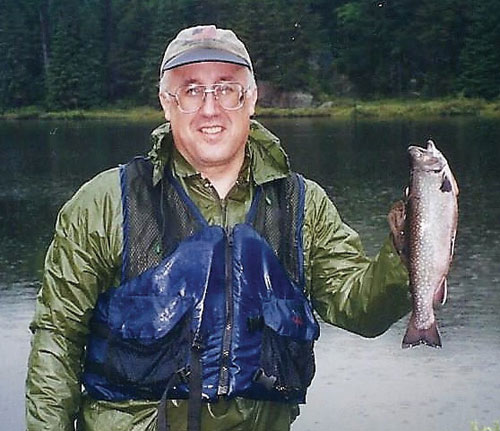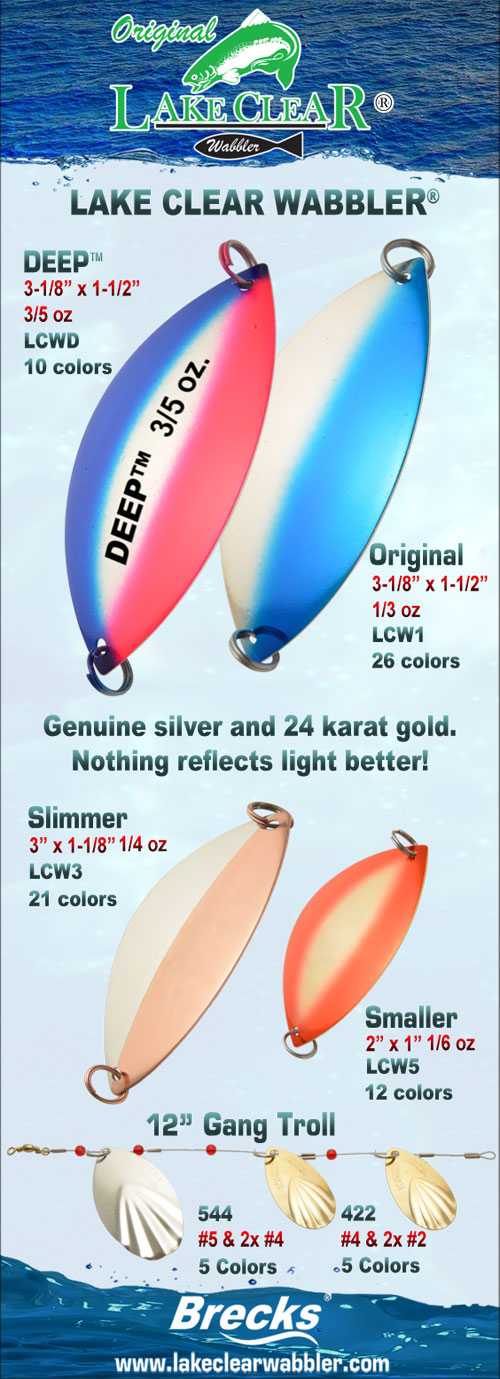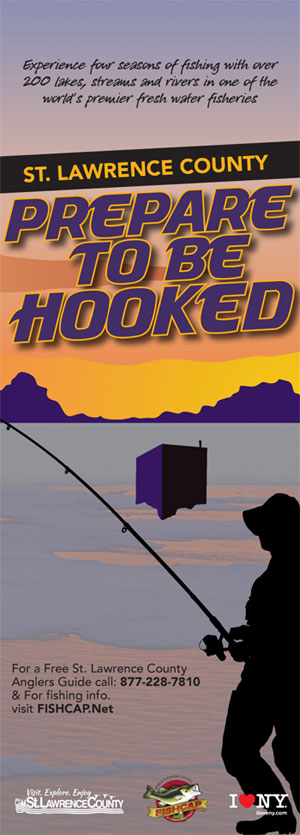The following article was written by Richard Preall, retired NYSDEC fisheris biologist. I became friends and fishing buddies with Richard years ago while he would help me research the ADK brook trout waters I wished to explore. I learned so much from Rich and truly gained complete respect for the hard work and dedication our biologists devote. Check out the anglermag.com/upstate-ny for articles on fishing Lake Clear Wabblers. –Angler Frank

By Richard Preall, Retired NYSDEC Fishery Biologist
“Ice Out!” Is a term of anticipation and excitement for any brook trout angler. My phone calls tripled in number in March with folks wanting a prediction of when the ice would be gone on various Adirondack lakes and ponds. A normal ice out time in years’ past would be around April 15th, but recent warm winters have nudged ice out closer to April Fool’s Day. I think this year will see a similar early ice out date since there were several very mild weather spells in the Adirondacks.

Ice out generally happens first on shallow, darkly stained waters. The ice will depart first from the northern shores of a pond, because that shore gets more sunlight due to the sun having a southerly arc in the spring. If a pond has a dark bottom it will also warm faster and that spurs trout feeding. Once a pond is completely open, those same areas generally hold more trout in the first weeks of the season.
If you don’t know a pond’s depth or coloration, then you need to pick an area that has multiple brook trout ponds within portage range of each other. One of them is bound to be open. A prime area for this is the Massawepie Boy Scout Camp in St. Lawrence County. Deer Pond, Pine Pond, Boottree Pond, Horseshoe Pond and Town Line Pond are all consistent trout producers with most fish in the 12-15 inch size class and an occasional lunker to dream about landing. Only Pine Pond requires extra effort to fish, all the rest are accessible by dirt roads. You might get surprised by a kokanee salmon in Deer Pond also – it is one of the few waters where that formerly stocked western U.S. species is naturally reproducing. Another good area is the Pharaoh Lake Wilderness in the Town of Schroon Lake in Essex County. Gull Pond, Oxshoe Pond, Horseshoe Pond, Burge Pond, Rock Pond, Little Rock Pond, and Gooseneck Pond are just some of the trout ponds in that vicinity.
The St. Regis Canoe area in Franklin County offers another trout pond concentration including Bone Pond, Bear Pond, Little Long Pond, Grass Pond, St. Regis Pond, Ochre Pond, Tuesday Pond, Kitfox Pond, Nellie Pond, Bessie Pond and Lydia Pond. To find other trout ponds you should consult DEC stocking lists at www.dec.ny.gov/outdoor/30467.html. Just be sure you are looking at the Fish Stocking List (actual) – most brook trout are stocked as fingerlings in October. The Spring Stocking List names waters which get yearling brown trout, rainbow trout or lake trout. Brook trout are rarely stocked as yearlings.
A unique way (in New York) to reach some ice out brook trout ponds is via bush plane. Helms Aero Service in Long Lake, Hamilton County ((518) 624-3931 or 624-3561) and Payne’s Air Service in Inlet (315) 357-3971, www.paynesairservice.com) will fly-in anglers to some hard to reach ponds. A favorite ice out destination is Lower Sargent Pond near Raquette Lake. This pond produced the most consistent, high quality spring trout fishing in the Adirondacks for 30 years until largemouth bass somehow got in there. The bass ate the young brookies and success plummeted. In the fall of 2013, I helped plan and carry out the reclamation of Lower Sargent Pond using the organic pesticide called rotenone. I consider that action a highlight of my career as a fisheries biologist. Survey work done in 2016 confirms the bass are gone and natural reproduction has blossomed. Other good fly-in lakes are Squaw Lake, Tirrell Pond, Big Rock Lake and Pine Lake – all in Hamilton County. No doubt Tom Helms or Jim Payne know a few other spots where you can drop in on a brook trout.
Ice out means cold water and even though brookies like the cold, their metabolism is a little slow until water temperatures are in the 50’s Fahrenheit. That means you need to slow down lure and fly speeds. It also means you should be bottom bouncing in those warmer parts of the pond. In early spring, brook trout focus on eating dragonfly larvae and leeches – both of which like hiding under leaf litter near shore. Slow trolling or casting flies such as a Montana nymph, black or olive green wooly buggers, and black rabbit strip leeches are a good bet. Brook trout fingerlings hang out very close to shore in the spring and by that time any maternal or paternal instincts of their parents are long gone. Yes, brookies are cannibals. So, streamers which imitate a young trout’s coloration such as a Hornberg or Mickey Finn should be flung anywhere there is woody debris or other cover near shore. Other streamers with white, red, yellow or orange color combos will also work. Spin fishermen can toss a size CD3 1.5” or CD5-2” floating or sinking Rapala in the brook trout pattern to tempt those bad trout parents. Lastly, early season brookies get a hankering for hardware at times. Slowly retrieving a small gold Phoebe with red tinting or a Goldfish has provoked many strikes for me. You can carry all the lures you need in a tackle box no bigger than your hand…something you will really come to appreciate after hiking a few miles.



Brook trout will twist, gyrate and roll once hooked. The fight is as unique as the beauty of these native char. The greatest threat to keeping these fish around for the next generation to enjoy is the introduction of non-indigenous fish species to a trout pond. Hundreds of trout ponds in the Adirondacks have been ruined by anglers using baitfish. Golden shiners quickly overpopulate ponds and greatly reduce trout survival and growth rates. Putting bass, perch or other warmwater species in a trout pond is a kiss of death for brookies. The best brook trout anglers I know never use fish as bait – there is simply no need.
Much to the surprise of some folks in Albany DEC, a recent survey of New York anglers found they greatly valued the chance to fish for brook trout in a remote setting. The allure of having a trout pond all to yourself after sweating out a hike while toting a canoe and other gear inspires many. Its romantic, primeval and rewarding all at the same time. Once you hold that trout and see its dark beauty all fatigue vanishes… you have escaped back to a time that was simpler and more natural.



